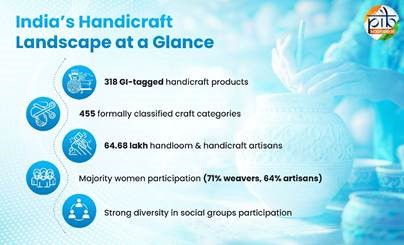Description
Context: The Haryana government has recently passed legislation that mandates companies in Haryana to provide jobs to local Haryanvis first, before hiring people from outside the State.
Background:
- The unemployment rate in Haryana is the highest of all States in India, as per data from the Centre for Monitoring Indian Economy, or CMIE.
- 80% of women in Haryana who want to work cannot find a job. More than half of all graduates in Haryana are jobless.
- Other States:
- The cabinet of the government of Jharkhand approved similar legislation to reserve jobs for Jharkhand residents.
- The Dravida Munnetra Kazhagam (DMK) in Tamil Nadu announced a similar proposal to reserve jobs for Tamils in its manifesto for the upcoming Assembly elections.
- This has attracted criticism from economists and commentators, as it militates against their liberal idea of a free economy.
Limited State Control:
- Focus on creating more jobs, not on reserving the few available ones is the popular refrain. But, it is a false binary.
- Creation of new jobs is not entirely in the control of State governments.
- Job creation is an outcome of the performance of the larger economy. If American giant retailer, Amazon, believes that the Indian economy is poised to grow robustly, it may choose to expand its operations in India.
- The Chief Minister of a State in India has limited control over the management of the larger economy and thereby, attracts new investors and businesses who can create jobs.
State’s Role:
- State governments in India can theoretically compete with each other on these parameters to attract Amazon to set up operations in their State.
- Further, any tax advantages that a particular State can provide vis-à-vis others will increase its attractiveness for Amazon.
- This is exactly what happened in America in 2018 when Amazon decided to build its second headquarters and various States, towns and cities publicly competed with each other to woo Amazon and its jobs to their area.
Critical factors:
- An elected State government can certainly, during its five-year tenure, attempt to provide high quality local infrastructure to attract new businesses.
- State governments also have the ability to provide land at affordable prices or for free to attract investments.
- However, the availability of skilled local labour is a function of many decades of social progress of the State and cannot be retooled immediately.
- After the introduction of the Goods and Services Tax (GST), State governments in India have lost their fiscal autonomy and have no powers to provide any tax concessions to businesses.
- So, while State governments have the ability to use land and local infrastructure as tools to attract businesses, they do not have control over immediate availability of skilled manpower or to use taxes as a tool to lure.
Agglomeration Effect:
- The most critical factor in the choice of a location for a large business is what economists term as the ‘agglomeration effect’ — the ecosystem of supply chain, talent, good living conditions and so on.
- A State with an already well-established network of suppliers, people, schools, etc. are at a greater advantage to attract even more businesses than the States that are left behind.
- Put simply, if Amazon’s competitor Walmart is already established in Karnataka, then there is a greater incentive for Amazon to also locate itself in Karnataka to take advantage of the established ecosystem.
- This leads to a cycle of the more prosperous States growing even faster at the expense of the lagging States.
The ‘3-3-3’ danger:
- This phenomenon is already evident in India’s increasing economic divergence among its States.
- The three richest large States (Maharashtra, Tamil Nadu and Karnataka) are three times richer than the three poorest large States (Bihar, Uttar Pradesh and Madhya Pradesh), in per-capita income, compared to 1.4 times in 1970.
- This gap between the richer and poorer States in India is only widening rapidly and not narrowing, due to the agglomeration impact of modern economic development paradigms.
Subnationalism:
- In this context, an elected government that operates on a five-year electoral cycle, confronted with a powder keg of millions of jobless voters will understandably resort to seemingly appeasement policies to salvage whatever it can of an ominous employment situation.
- After all, how is the Haryana government’s policy to restrict labour movement into its borders and protect jobs for locals any different from the Prime Minister’s ‘self-reliant India’ initiative to restrict goods movement into India’s borders and protect local jobs?
Conclusion:
- The potent combination of widening inter-State inequality, a ‘rich States get richer’ economic development model, an impending demographic disaster and shrinking fiscal autonomy for elected State governments in a politically and culturally diverse democracy will inevitably propagate nativistic sub-nationalism among the various States of India.
- Until the economic playing fields for the various States are levelled and much greater fiscal freedom provided to the States, “don’t protect but create jobs” will only remain a topic of a hollow lecture and moral sermons.
https://www.thehindu.com/todays-paper/tp-opinion/the-job-crunch-and-the-growing-fires-of-nativism/article34070050.ece










